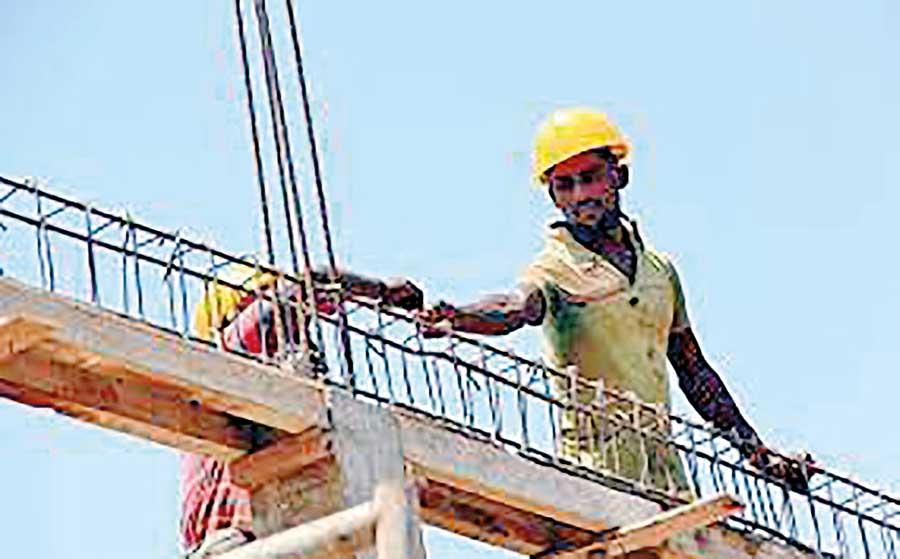20 Dec 2023 - {{hitsCtrl.values.hits}}

- Construction sector contracts 5.5% in 3Q despite economy rebounding to growth of 1.6%
- However, the sector decline slowed significantly from the 23.1% contraction in 2Q, showing signs of potential recovery
- Resumption of projects funded by govt. and multilateral agencies expected to support sector’s recovery
Despite a modest rebound in the overall economy in the third quarter, Sri Lanka’s construction sector, a crucial segment known for generating significant employment across all levels, has continued to contract.
This marked the sector’s ongoing streak of contraction, now stretching for two consecutive years into the third quarter of 2023.
According to the latest Gross Domestic Product (GDP) data, the construction sector, which accounted for 6.3 percent of the economy, contracted 5.5 percent in the July – September quarter from a year ago, bringing the nine-month decline in the sector to 24.8 percent.
However, the sector decline slowed significantly from the 23.1 percent contraction seen in the second quarter, reflecting that the sector is nearing the end of its down drift which lasted for two years.
Despite being massively affected during the initial days of the pandemic in 2020 due to lockdowns and restrictions on physical work, the sector bounced back strongly from the latter part of that year supported specifically by the historically low interest rates.
This even sent prices of real estate to record high levels due to massive demand for residential property which far outpaced the supply of housing.
However, the recovery proved to be short-lived as the sector began to exhibit weaknesses in the second half of 2021. This downturn was attributed to the imposition of the third cycle of lockdowns aimed at curbing the resurgence of the virus.
The sector also faced challenges arising from shortages in foreign exchange, a consequence of repeated disruptions to economic activities, and also the large outflow of foreign exchange by way of debt repayments.
These prolonged foreign exchange shortages forced the authorities to ration the supply of foreign currency, creating limited supplies and shortages in imported items for the industry, sending their prices to exponential levels, putting a long lasting damper on the industry.
The sector woes became much more intense from 2022 when the economy came to a complete standstill after running out of nearly all foreign currency reserves the country had. As a result, import restrictions became broader based and pronounced.
The government, which had been the largest spender in the construction sector, suspended large-scale infrastructure projects and re-directed its budgetary allocations towards providing relief to the masses who were badly affected by the economic crisis.
Furthermore, the sharp increase in interest rates from the previous year had a chilling effect on the sector, given that construction is a highly interest rate-sensitive industry.
However, there are emerging indications that projects, particularly those financed by multilateral agencies and the government are resuming, presenting the potential to lift the sector out of recession.
The construction sector Purchasing Managers’ Index for October, which came out a few weeks ago showed an index value of 50 indicating a neutral level where neither expansion nor contraction had taken place after two years of contraction.
22 Nov 2024 22 Nov 2024
22 Nov 2024 22 Nov 2024
22 Nov 2024 22 Nov 2024
22 Nov 2024 22 Nov 2024
22 Nov 2024 22 Nov 2024